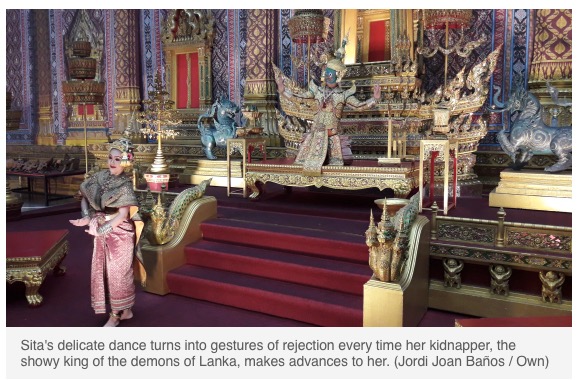AYUTTHAYA, THAILAND, September 15, 2023 (Lavan Guardia, Google translated from Spanish): In Asia there is no romance of love and war more famous than the Ramayana. The Sanskrit epic is not only the backbone of Indian culture, but permeates the folklore of all of Southeast Asia, from Laos to Bali. It doesn’t matter whether the audience is Buddhist, Hindu or even Muslim. it’s like in Java, where the story of Rama and Sita is relived with spectacular puppets in a shadow theater. However, only between Thailand and Cambodia has this quintessential battle story – like the Mahabharata – been the cause of a bitter dispute. Both countries – once in conflict over ownership of the Khmer border temple of Preah Vihear and still today over its boundaries – also dispute the ownership of this total spectacle, which the former call khon and the latter khol.
In both cases, it is a sophisticated representation of the Ramayana, with hundreds of dancers, actors, singers, musicians and rhapsodes, as well as increasingly complex artifacts, especially in Thailand. Because, while in Cambodia the hope is that this art does not die with its last practitioners, among the Thais revitalization is a fact. This is attributed to the efforts, for fifteen years, of Queen Sirikit, today Queen Mother. After all, in Thailand it is an artistic form of courtly origin, while in Cambodia it is more associated with certain monasteries. Just as the inscription of Preah Vihear on the UNESCO world heritage list spurred Thai nationalism, a decade later, it was Cambodia’s proposed recognition of the khol as intangible heritage that accelerated Thai demands. Fortunately, UNESCO recognized khon and khol simultaneously, in 2018.
More at source.
https://www.lavanguardia.com/internacional/20230915/9228184/tailandia-camboya-folclore.html
A daily summary of world news for Hindus and non-Hindus alike

